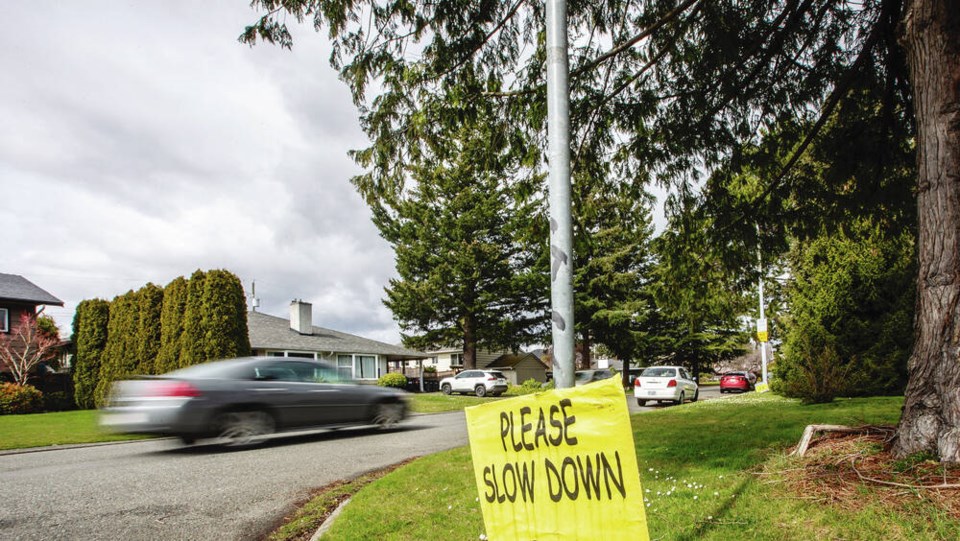New speed-limit signs will start appearing on side streets in Victoria next spring, after the city adopted a new default speed limit of 30 km/h on neighbourhood roads.
The rollout of the new signage is expected to happen over several years.
Where the new signs are erected first will be based on factors such as collision history, the presence of vulnerable populations, parks, schools, care facilities and community centres.
The city will start by extending to a full day the 30 km/h zone around some schools and parks.
Municipal councils have the authority to set speed limits on roads under their jurisdiction.
The new default limit won’t apply to arterial streets such as Bay, Blanshard, Cook and Douglas or secondary arterial streets such as parts of Dallas Road, Finlayson Street, Government Street and Fort Street or collector streets such as Belleville Street, Caledonia Avenue, Foul Bay Road and Menzies Street.
The initiative was inspired by Vision Zero, created in Europe in the 1990s, which aims to reduce fatalities through better road design, speed reduction and other measures.
A city report said slower speeds contribute to improved comfort for pedestrians and cyclists, less noise and less severe outcomes when collisions occur.
The report noted collisions with vulnerable road users at 30 km/h or less correlate with a 10 per cent probability of death, compared with a 30 per cent probability of death at 40 km/h or 85 per cent at 50 km/h.
In July, Saanich council unanimously approved a plan to evaluate and potentially reduce speed limits on the municipality’s streets.
Two types of streets are being considered for speed evaluation: Type A streets, which don’t have a continuous yellow centre line, and nine Type B corridors, which do.
Among the corridors to be studied are Sayward Road to Cadboro Bay Road, Cedar Hill Cross Road, Harriet Road from Gorge Road West to McKenzie Avenue, Tillicum Road, Gorge Road West, Prospect Lake Road, Old West Saanich Road and Oldfield Road, West Saanich Road and Emily Carr Drive.
The road study for the nine Type B corridors is expected to take nine to 11 months and be implemented at the end of 2023
The default speed limit in B.C. municipalities is now 50 km/h.
>>> To comment on this article, write a letter to the editor: [email protected]



